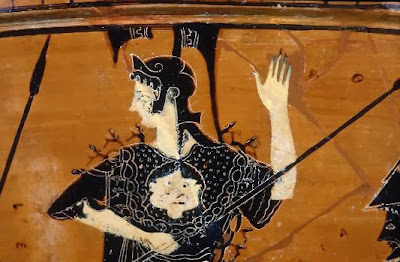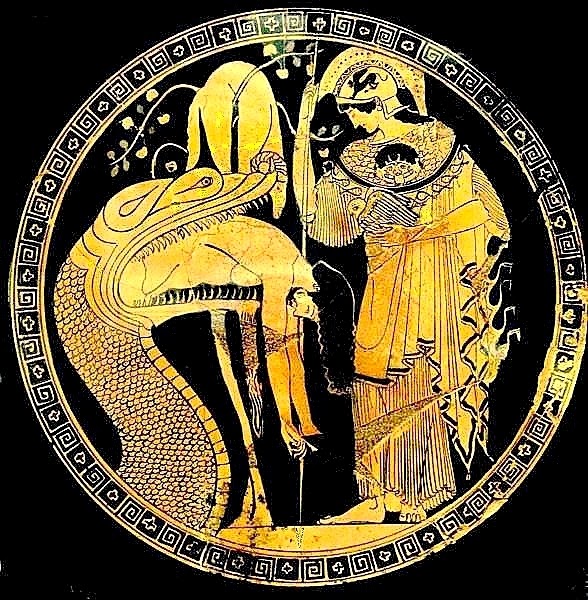Now she pulled her
cowl down again. Her hair writhed with the serpentine undulations. The golden
snakes separated from her locks and hissed softly. Perseus stood still, both
enthralled and terrified. From her forelock, one strand of hair turned darkest
black, red eyes glowing like coals.
“Do you know who
this is, Perseus?”
“Venpay” he
breathed.
She nodded. “You
have seen his children’s work. Venpay has the purest venom in the world. When
his fangs sink, my death will be certain, and none can reverse it. He tells me
because of my close proximity to him for many months, I will not be spared an
instant death. My time will take perhaps a few minutes, and it will be a death
of asphyxiation and fear. He advises that it would be a kindness to sever my
head." She pointed to the adamant sword. “Using that, it would be instant
and painless.”
He looked away. “I
cannot kill the woman I love.”
She spoke. “I
understand the prophesy. Only the man who truly loves me can do this. A strike to me will be a strike to Poseidon
himself, and on my behalf.”
She saw him waver.
She walked to him and kissed him gently, softly, then reached and caressed his
face, smiling, at peace. “This is the time.”
She reached back
and took the sole black lock from her scalp. She kissed Venpay and stroked his
head. She whispered to him, then smiled and spoke to Perseus. “I am thanking
him for his gift of his venom. It is a singular honor never before bestowed
upon a mortal.”
She gently took
Venpay’s head and held it to her wrist. “Strike at my command, Perseus. Our
sons, Cassup, and all within can be saved."
The ancient
serpent god wrapped around her wrist, and then gently sank its fangs into her
skin. Even as he watched, stunned, she began to pale and slow.
“Strike, if you
have strength!" The voice was Stheno's.
“Strike, if you
have courage!" The voice was Euryale’s.
“Strike, if you
love me." The voice was Medusa’s, and weakening fast.
Nearly blinded by
tears, he brought the adamant blade in a perfect arc toward her neck. The last
mortal words she heard were his cry for forgiveness.
***
Her lids closed as she awaited the sword’s
blessed release. She had planned for her last moments to be in prayer for the
delivery of her children, but as her eyes shut, she found herself detached from
her body and back in that of the dream horse. Instead of paralysis, the
coursing venom seemed to impart immense strength and vitality.
She ran with all her strength, boldly and
without hesitation toward the cliff. Her front hoofs found the edge and she
leapt with joy, reaching for the stars themselves breaking through the evening
skies. All fear was banished, replaced by elation.
In the moment when she was perfectly
balanced between the strength of the leap and the pull of gravity, a rippling
came from her shoulders. Instinctively she pushed down, then up. Huge wings had
unfurled, bedecked in white feathers each longer than a man’s arm. She pulled
herself up into the air, striving for the beckoning stars, hoofs catching on
the air as if it were turf. She cried out in a shout of delight, the sound
swirling the cosmos.
Stars shattered and scattered and
realigned.
Excerpt - S.D. Hine's Medusa













,+first+half+of+the+5th+century+BC..jpg)









+that+playing+them+disfigured+her+face+(from+Kelibia.jpg)











